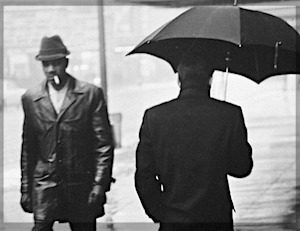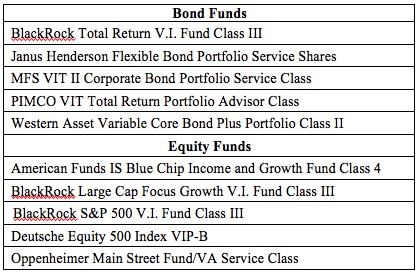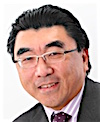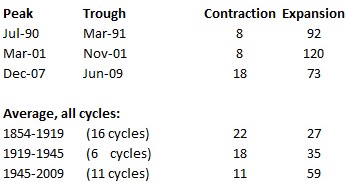
To certain policymakers in Washington, D.C., the fact that tens of millions of Americans working at tiny companies aren’t covered by a retirement plan at work—and might reach age 65 with only Social Security to live on—is a societal time bomb that needs defusing.
For big 401(k) recordkeepers and asset managers, that same “coverage gap” represents a opportunity that hasn’t existed before. In the past, the small company market was too fragmented for them to pursue. At the same, small employers have avoided sponsorship because they fear the costs, complexities and legal risks that go with it.
All that could change if the dysfunctional Congress passes any of a slew of retirement-related legislative proposals currently pending. If passed, the bills could do for 401(k) providers roughly what hydraulic fracking did for the oil industry: Allow it to aggregate a widely dispersed, hard-to-reach resource into economically viable quantities.
In the House, the Retirement Enhancement and Savings Act of 2018 (RESA), the Retirement Plan Simplification and Enhancement Act of 2017, and other bills (HR3902, HR3910, HR854) could turn the retirement business on its head by letting teams of retirement service providers create turnkey 401(k) plans—called Pooled Employer Plans or PEPs.
The providers would then invite dozens or even hundreds of companies to join these PEPs (sometimes called “open multiple employer plans” or open MEPs). Once the savings of those companies’ employees are gathered into large investment pools, big recordkeepers and asset managers can efficiently serve them.
Politicians and providers alike hope that thousands of small employers who currently don’t offer plans—and some who are unhappy with the plans they have—would join a PEP. As PEPs flourish, the industry assures legislators, more employers will adopt them. Then, in theory, the dreaded “coverage gap” would shrink.
“RESA would allow Prudential and other major recordkeepers to participate at the smaller end of the market in a more scalable and efficient way,” said Harry Dalessio, head of Full Service Solutions at Prudential Retirement. “It could flip the existing service model on its head and become the go-to market strategy at the small end.”
Recordkeepers that we’ve identified as having an interest in this emerging space include: Ameritas, Empower Retirement, Prudential, Securian and Transamerica. As an asset manager, State Street Global Advisor is especially active.
Companies playing professional rules, including payroll, consulting or outsourced fiduciary roles, include ADP, PayChex, Bukaty Companies, Convergent Retirement Plan Solutions, Fidelis Fiduciary Management, Mesirow Financial Investment Management, Pentegra, Plan Pilot, Sageview Advisory Group, Tag Resources, and The Platinum 401(k). (If we missed you, please let us know.)
State Street Global Advisors
State Street Global Advisors, the financial giant that sells its SPDR exchange-traded funds (ETFs) through defined contribution plans, has lobbied aggressively for the RESA bill. Already active in the multiple employer plan space, it serves as the investment manager for People’s Pension in the UK, a master trust arrangement in the US that resembles a PEP. It is an investment provider for OregonSaves, the state-sponsored auto-IRA in Oregon and it has put in a bid to manage assets for Vermont’s new state-sponsored multiple employer plan.

Melissa Kahn
Since Boston-based SSgA is both an ETF manufacturer and a wealth management firm, it could sponsor a PEP or provide services to one. “There are multiple roles we could play,” Melissa Kahn, SSgA’s managing director for Retirement Policy Strategy told RIJ recently. “We could be the investment manager of whatever products are offered through the PEP. We could play a consultative role. We’re also looking at other options, in terms of strategic partnerships.
“We are not a recordkeeper, so we can’t be a complete solution. But we could clearly have a strategic alliance to develop the structure for one. We could be in the construction phase of it, and then a separate fiduciary would oversee the whole plan. That could be a
3(38) or 3(21) fiduciary,” she said, referring to two types of investment oversight roles.
“The world is moving to a new benefit platform for retirement and for health, where the employer is the funder and facilitator and the liaison with the providers, but not the sponsor or fiduciary,” Kahn added. “I think given our litigious society, that’s where we will be going. It will start with smaller employers. Down the road it could reach mid-sized and larger employers who say, ‘I want this liability off my plate.’”
Transamerica Retirement Services
As a recordkeeper, Transamerica has long been active in the multiple employer plan (MEP). As far back as 2002, the firm supported “closed MEPs,” which are multiple employer plans that admit only certain affiliated employers and their employees, according to Deborah Rubin, the vice president and managing director who leads Transamerica’s distribution efforts for MEPs and third-party administrators.
In 2013, Transamerica created an “exchange” where unrelated employers could join an open MEP. In an open MEP, each employer must file its own plan document, called a Form 5500. That responsibility could go away in a PEP.
“Our ‘retirement exchange’ is a pooled investment vehicle that contains a collection of single-employer retirement plans,” Jim Kais, then a senior vice president at Transamerica Retirement Solutions (at Ameritas as of May 2018), told InsuranceNewsNet in 2013. Transamerica serves as the recordkeeper and manager of the plan/participant interface. Knoxville, TN-based Tag Resources provides fiduciary and other services.
“We have expertise in running MEPs,” said Jeanne De Cervens, vice president and director of federal government relations at Transamerica. “So we are well positioned if RESA passes.” Added Rubin, “Transamerica is in a good place no matter what, and our exchange would stay in business either way. This is what small employers are looking for. We really care about expanding coverage, and we care about the beauty of the exchange.”
Securian Financial
In June, Securian Financial launched MEPConnect, with Securian as the recordkeeper and subsidiary Minnesota Life as the provider of each plan’s group annuity. Two fiduciaries are part of the team: Clearwater, FL-based The Platinum 401k, Inc., as the plan administrator and Tampa-based Fidelis Fiduciary Management as the investment manager. Like Transamerica’s exchange, MEPConnect could grow into a PEP provider if the applicable laws change.
“For small to mid-sized plans, we’re using The Platinum 401k chassis and leveraging that with the strength of our plan administration and compliance services,” Ted Schmelzle, head of plan sponsor services at Securian. “Each one of the employers will have its own audit, its own Form 5500, its own ERISA bond. Because of the risk of civil litigation, my clients all have a concern about running plans.”
For the employers in the MEP, the plans are similar but not necessarily identical, said Terrance Power, CEO of The Platinum 401k. “Typically, they will all have the same plan investment lineups,” he told RIJ. “Eligibility and plan designs are flexible and are set by each adopting employer. If we have a large plan with special needs we can also customize the investment lineup for them.”
“If RESA passes,” said Schmelzle, “we would be in a good position to transition over [from open MEPs to PEPs]. We felt that we’re at an inflection point where it made sense to enter the market. MEPConnect prepares us for the future.”
Prudential Financial

Harry Dalessio
In 2017, Prudential Retirement published a whitepaper in praise of open MEPs and their potential to solve America’s retirement savings shortfall by helping small employers offer plans. In a recent interview, Prudential’s Harry Dalessio reiterated that message.
“We’ve been preparing for this for the last few years,” Dalessio told RIJ. “We’re thinking about product design, service models, investments and other products. We’re thinking much broader than just DC recordkeeping. Recordkeeping is a commodity. A lot of firms can provide defined contribution services.
“Our strategy is to expand the footprint about the broader issue of financial wellness. Our group businesses offer products and services to 20 million people. There’s an opportunity to bring the full power of Prudential into a market that goes beyond 401(k) administration. Given the type of feedback we get from [plan sponsors], we’re thinking about bolting on a variety of financial wellness capabilities.
“We can add capabilities like emergency savings accounts, healthcare savings accounts and 529 plans. Student loan debt counseling would be big. Budgeting would be big. That’s where we see an opportunity for leadership: in financial wellness. The market won’t change overnight. There’s a lot of complexity to providing these services. Depending on how the RESA language is written, it could open up more possibilities for income products to be part of the core offering of open MEPs.”
Losing the ‘main leg of the stool’
In sum, the coverage crisis is providing an opportunity for an historic shift in the role of plan sponsor from employers—who increasingly don’t want the risk of being sued for mismanaging a plan—to providers. The providers see a chance to do well and do good at the same time. There will be unforeseen losers as well as winners.
“There is more opportunity for disruption in the retirement space today than ever before,” one retirement executive told RIJ, on condition of anonymity. “The converging forces of demographics, labor trends, technology, and politics have placed a 30-year-old model in the cross hairs.
“Every rung of the value chain is under siege by these forces. The perennial assumption that the employer is the main leg of the stool is about to be cut off. The trend toward the ‘big eating the small’ will continue. The winners will be big recordkeepers.”
Next week: Will Pooled Employer Plans really close the ‘coverage gap’?
© 2018 RIJ Publishing LLC. All rights reserved.















